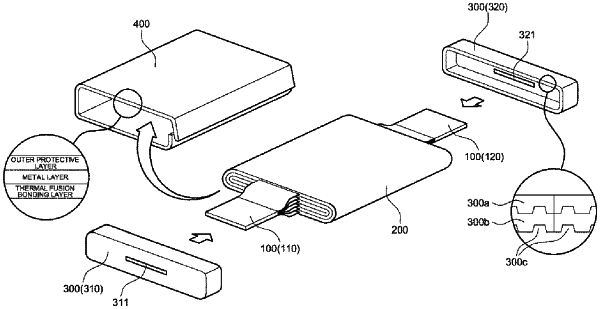| CPC H01M 10/052 (2013.01) [H01M 50/183 (2021.01); H01M 50/176 (2021.01); H01M 50/179 (2021.01); H01M 50/538 (2021.01); H01M 2220/20 (2013.01); Y02E 60/10 (2013.01)] | 9 Claims |

|
1. A lithium secondary battery comprising:
an electrode assembly to which an electrode tap is attached;
an electrode tap receptor configured to house a portion of the electrode assembly;
wherein the electrode tap receptor comprises a hole through which a portion of the electrode tap protrudes to an outside; and
a case formed from one sheet configured to surround the electrode assembly,
wherein an end of the electrode tap receptor and an end of the case partially overlap each other, and the end of the case is disposed over the end of the electrode tap receptor to seal the electrode assembly,
wherein the case surrounds sides of the electrode assembly to which the electrode tap is not attached,
wherein the electrode tap receptor includes a gas barrier layer, and
wherein the electrode tap receptor includes a plurality of electrolyte storage parts formed at an inner surface of the electrode tap receptor,
wherein each electrolyte storage part has a shape of a groove, and
wherein the plurality of electrolyte storage parts are formed in a portion in which the electrode tap receptor and the electrode assembly contact each other.
|